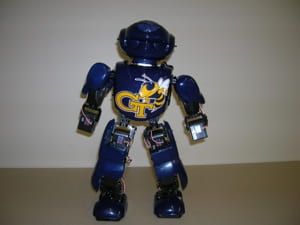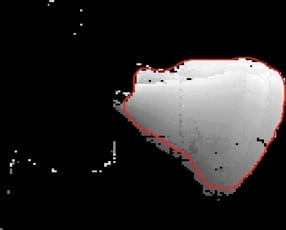
Mechatronic and robotic systems for neurorehabilitation can be generally used to record information about the motor performance (position, trajectory, interaction force/impedance) during active movements. Being able to objectively assess the performance of a patient through repeatable and quantifiable metrics has shown to be an effective means for rehabilitation therapy. However, to date, we are unaware of any research regarding child upper limb rehabilitation techniques using robotic systems; rather, the majority of these systems are only being applied to stroke patients.
Logically, children are naturally engaged by toys, especially those that are animate. However, while there are a number of robotic toys that have been shown to be engaging to children, many of the studies focus solely on children with autism. The goal of this project is to fuse play and rehabilitation techniques using a robotic design to induce child-robot interaction that will be entertaining as well as effective for the child.
Using a mimicking approach in order to engage the child in a gaming scenario, the humanoid demonstrates an action and asks the child to perform the same action. While the child is performing the action, the humanoid is recording and processing the child’s movements as input data in order to determine if the movements indeed match that its own. Utilizing image processing techniques such as Motion-History Imaging (MHI) and Maximally Stable Extremal Regions (MSER) to simplify the image and recognize the type of motion respectively, coupled with Dynamic Time Warping (DTW) for sequence matching and other physical therapeutic metrics, the humanoid is able to notify the child whether or not he or she has performed the movement correctly.
Using Robots to Aid with Physical Therapy
Lead Engineers: Douglas Brooks & Ayanna Howard


Related Publications
D. Brooks, A. Howard, “A Computational Method for Physical Rehabilitation Assessment,” IEEE Int. Conf. on Biomedical Robotics and Biomechatronics, Tokyo, Japan, Sept. 2010.
D. Brooks, A. Howard, “Upper Limb Rehabilitation and Evaluation of Children Using a Humanoid Robot,” 2nd Workshop on Child, Computer, and Interaction, Cambridge, MA, Nov. 2009.
A. Howard, S. Remy, C.H. Park, H.W. Park, and D. Brooks. “Intelligent robotics for assistive healthcare and therapy,” The Path to Autonomous Robots, G. Sukhatme (Ed), Springer Science, November 2008.
A. Howard, S. Remy, H.W. Park, “Learning of Arm Exercise Behaviors: Assistive Therapy based on Therapist-Patient Observation,” RSS: Workshop on Interactive Robot Learning, Zurich, Switzerland, June 2008.
| Robot Learning | Assistive Robotics | Education and Robotics | Space Flight Life Support Systems |

